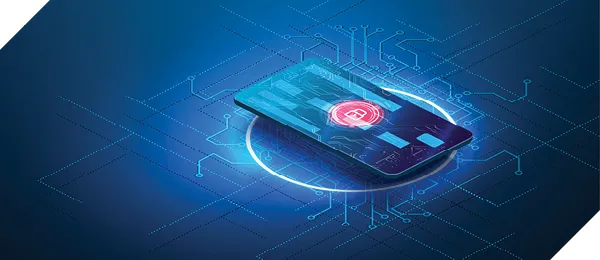Data protection and privacy goes beyond just knowing the risks—it's about taking actionable steps to safeguard your information and finances. While understanding the threats of data breaches and identity theft is crucial, implementing best practices is equally important to prevent these risks from becoming a reality.
In this second part of our series on data protection and privacy, we focus on practical measures to enhance your security. From being cautious about what you share online to ensuring the businesses you interact with are secure, every step counts when it comes to the best identity theft protection.
We'll also provide guidance on what to do if your data is compromised, outlining immediate actions and recovery steps. Being more mindful about your online activities and taking several protective measures can significantly reduce your vulnerability to cyber threats and keep your personal information safe.
Best Identity Theft Protection Tips: How to Increase Your Digital Awareness
Be Aware of What You Put Online
It’s unfortunate to think of, but everything you post online can be potentially used against you. Your full name, address, phone number, and even your social media posts can be harvested by cybercriminals.
The Federal Trade Commission reported that consumers lost more than $10 billion to fraud in 2023 –– a 14% increase over reported losses in 2022.
So, how do you protect yourself?
- Limit personal information: Don’t post or share your Social Security number, bank info, home address, family member names, or phone number on social media or other public websites.
- Review privacy settings: Regularly check and update your social media privacy settings to control who can see your information and posts.
- Think before you post: Think how the info you post can be used. Even seemingly harmless posts can give away valuable information to cybercriminals.
Be Aware of Who You Do Business With
When you do business online, it’s important to make sure the companies you interact with are secure since a breach can expose your personal and financial info to bad actors. Even apps on your mobile device can potentially lead to security issues. In 2018, the fitness brand Under Armour announced that an unauthorized party accessed user account data for its popular MyFitnessPal app. Usernames, email addresses, and hashed passwords for 150 million user accounts.
Here’s how to check the security of the businesses you deal with:
- Check for HTTPS: Make sure any website you’re visiting uses HTTPS (not HTTP) in its URL. This means it’s a secure connection.
- Read privacy policies: Read the company’s privacy policy to know how your data will be used and protected.
- Research the company: Look for reviews and reports on the company’s security practices. Trusted companies often have certifications or security seals from recognized authorities.
- Stay informed: Be aware of recent data breaches and avoid companies that have had security issues in the past.
Fraud Prevention Best Practices for Individuals
As cyber threats become more sophisticated, adopting safe practices to safeguard your personal and financial information is essential. By implementing these fraud prevention strategies, you can significantly reduce the risk of falling victim to cybercriminals. Here are some best practices to keep in mind to enhance your digital security.
Use Strong Passwords
Creating strong, unique passwords is one of the most effective ways to protect your online accounts. Weak passwords are easy targets for cybercriminals using methods like brute force attacks and credential stuffing to gain access to your information.
While it may be tempting to have common passwords that you can easily remember, having a unique and complex password for each account that combines uppercase and lowercase letters, numbers, and special characters provides the best protection.
"To stay safe, don't reuse your passwords because they can be part of data breaches, just like your Social Security or credit card numbers,” cautions Tracy Swaim, Fraud Risk Manager at HTLF. “Imagine a retail company gets breached, and username and password combinations are available for sale on the deep web. Cybercriminals buy that list and try those combinations on every other site they can think of, including banks.”
Enable Two-Factor Authentication
Two-factor authentication (2FA) is a security process that requires two different forms of identification to access an account or system. The first factor is usually a login and password combination. The second factor is an additional verification method, which can be a code texted to your phone, a fingerprint, or facial recognition.
To ensure the highest level of protection for your accounts, turn on two-factor authentication wherever available. This additional step enhances security by making it much harder for cybercriminals to gain unauthorized access, even if they have your password.
Monitor Your Financial Accounts Regularly
Sometimes, data breaches occur on a smaller scale or aren’t immediately discovered by the affected companies. Luckily, there are a few steps you can take to keep an eye out for fraudulent activity.
“I always recommend reviewing your financial accounts at least several times a week. Because if there's something you don't recognize, time is of the essence,” advises Swaim. “If you’ve had checks stolen out of the mail, you need to act quickly to cancel them before they can be used. Similarly, if you notice unauthorized funds being withdrawn, restrict your account immediately to prevent further loss.”
Swaim also suggests taking advantage of the free credit reports you’re entitled to yearly from each of the credit bureaus: Equifax, TransUnion, and Experian. If there are any credit inquiries, debts, or new credit cards or loans you don’t recognize, notify the bureaus immediately.
Avoid Unsecured Wi-Fi Connections
While it may be tempting to work from your local coffee shop, connecting to their public Wi-Fi network can expose your data to cybercriminals. Even when you’re not actively accessing websites or apps on your devices, being connected to public Wi-Fi puts you at risk.
“One day, I was at Target and used the public Wi-Fi to look something up on my phone. Suddenly, I received a notification that my Starbucks app balance had been drained, even though I didn't have the app open,” shares Swaim. “I use this incident to illustrate how easily and quickly things can go wrong on public Wi-Fi.”
It’s a best practice to use only secured, private networks like your home Wi-Fi, especially when accessing financial accounts or transmitting any personal information.
Safeguarding Your Data: Tools and Resources
In addition to following best practices for personal data security, there are tools and resources that can help you take a proactive approach. Here are some to consider:
Credit Freeze
A credit freeze, also known as a security freeze, blocks access to your credit report so identity thieves can’t open new accounts in your name. To freeze your credit, contact each of the three major credit bureaus to request a freeze, provide personal info to verify your identity, and set up a PIN or password to manage the freeze. This will prevent new unauthorized accounts, and it is free to set up. You can lift the freeze temporarily or permanently as needed.
Credit Monitoring
Credit monitoring helps keep an eye on your credit reports and alerts you to any activity. These services detect suspicious activity early so you can respond quickly and give you updates on your credit status so you can have peace of mind about your credit. You can choose free services that give basic alerts and updates or paid services from companies like Experian, Equifax, or TransUnion that provide full monitoring and additional features like identity theft insurance.
Identity Theft Protection
Identity theft protection services give you a more comprehensive way to protect your personal info by monitoring many data sources. These services give full monitoring, alert you to suspicious activity, and help you recover your info if your identity is stolen. When choosing a service, consider the company’s reputation, the scope of their coverage (credit monitoring, dark web surveillance, social media monitoring), and the level of customer support and recovery assistance they offer.
Banking Alerts
Setting up banking alerts allows you to get real-time notifications of unusual activity in your accounts so you can stay on top of your account security and respond quickly to potential threats. To set up banking alerts, log in to your bank’s online platform, go to the alerts section, and choose the types of alerts you want to receive, such as large withdrawals, login attempts, or changes to account settings. Customizable alerts tailored to your monitoring needs give you immediate notifications of suspicious activity to enhance your overall account security.
Data Protection and Privacy for Victims of Data Breach or Identity Theft
Experiencing a data breach or identity theft can be overwhelming, but taking immediate action can help minimize the damage and start the recovery process. To prioritize data protection and privacy, you’ll need to ensure that these data leakage protection tips are considered if you suspect your identity has been stolen or your data has been compromised.
Immediate Steps to Take
Reporting the incident to the right authorities is key to documenting the crime and starting the recovery process.
- Alert your financial institutions: Call your bank, credit card companies, and other financial institutions and let them know about the breach and ask them to put a hold on your accounts, if necessary.
- Change your passwords: Update your online account passwords, especially for financial and email accounts. Make sure the new passwords are strong and unique.
- Watch your accounts: Monitor your bank and credit card statements for any suspicious activity. Check your credit reports for any new accounts or inquiries.
- Contact the credit bureaus: Notify the three major credit bureaus and put a fraud alert on your credit report. This alerts creditors to take extra precautions before opening new accounts.
- File a report with the FTC: Visit IdentityTheft.gov to report the identity theft to the Federal Trade Commission (FTC) and get a personalized recovery plan.
- Notify law enforcement: File a police report with your local police department. Having a police report will help you dispute fraudulent charges and accounts.
- Freeze your credit: Contact each credit bureau to put a credit freeze on your file. This prevents new creditors from accessing your credit report and opening accounts in your name.
Taking these steps promptly can help you regain control of your personal information and minimize the impact of a data breach or identity theft.
Additional Resources
If you experience a data breach or identity theft, there are many organizations and tools to guide you through the recovery process and protect yourself moving forward. Here are several we recommend:
- National Cybersecurity Alliance: A non-profit organization that provides cybersecurity education and awareness.
- Consumer Financial Protection Bureau (CFPB): A U.S. government agency that offers consumer protection in the financial sector.
- Identity Theft Resource Center: This non-profit organization provides free victim assistance and education.
- Internet Crime Complaint Center (IC3): Run by the FBI, this organization serves as the U.S. hub for investigating cybercrime.
Being vigilant and proactive is the key to protecting your personal data. By understanding potential risks and putting best practices into action, you can significantly reduce your exposure to cyber threats. Our team is here to help protect you from these types of fraud and schemes. To learn more, visit our fraud protection resource center.









